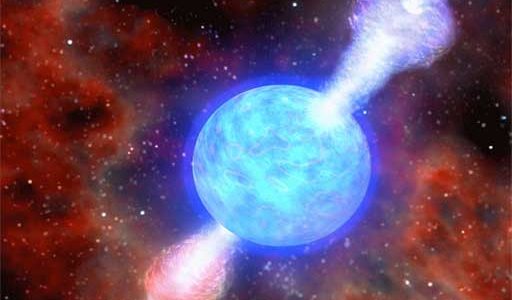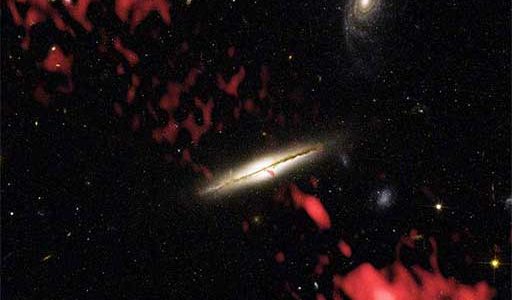Latest NRAO News
News is managed by NRAO News & Public Information. Questions about News? Have a story to share? Want to interview a scientist or create new media about our telescopes?

Astronomers using a global combination of radio telescopes to study a stellar explosion some 30 million light-years from Earth have likely discovered either the youngest black hole or the youngest neutron star known in the Universe.

Twenty years ago, astronomers discovered a number of enigmatic radio-emitting filaments concentrated near the center of the Milky Way Galaxy.

Astronomers have discovered a key signpost of rapid star formation in a galaxy 11 billion light-years from Earth, seen as it was when the Universe was only 20 percent of its current age.

A Fourth of July fireworks display features bright explosions that light the sky with different colors, yet all have the same cause.

Astronomers studying the most distant quasar yet found in the Universe have discovered a massive reservoir of gas containing atoms made in the cores of some of the first stars ever formed.

An international team of astronomers has discovered that a young galaxy had a central disk of gas in which hundreds of new stars were being born every year — at a time when the Universe was only a fraction of its current age.

Astronomers analyzing nearly 20 years of data from the National Science Foundation’s Very Large Array radio telescope have discovered that a small star in a multiple-star system in the constellation Taurus probably has been ejected from the system after a close encounter with one of the system’s more-massive components, presumed to be a compact double star. This is the first time any such event has been observed.

Giant jets of subatomic particles moving at nearly the speed of light have been found coming from thousands of galaxies across the Universe, but always from elliptical galaxies or galaxies in the process of merging — until now.

Images from the National Science Foundation’s Very Large Array radio telescope have uncovered compelling evidence that supermassive black holes at the hearts of large galaxies collide when their host galaxies merge.

A NASA Astronaut who carried a flag bearing the logo of the National Radio Astronomy Observatory on last month’s Shuttle flight returned that flag to the observatory on Friday, April 12, at a ceremony in Socorro.





